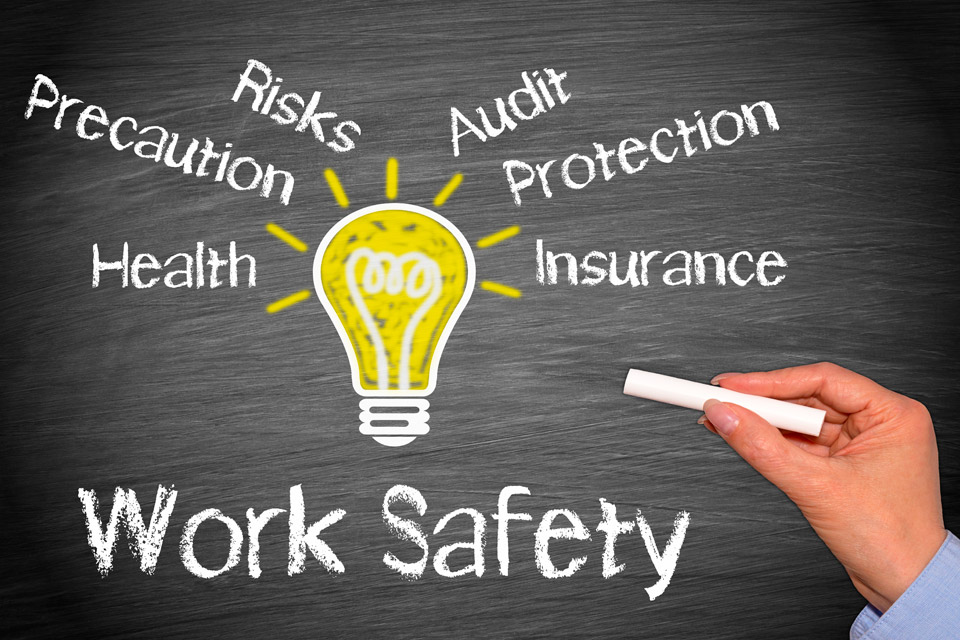The Health and Safety At Work Act 1974
The Health and Safety at Work etc Act 1974 is the primary piece of legislation covering occupational health and safety in Great Britain. It’s sometimes referred to as HSWA, the HSW Act, the 1974 Act or HASAWA.
 The Health and Safety at Work Act 1974 requires employers to ensure the health and safety of all employees and anyone affected by their work, so far as is reasonably practicable, which means balancing the level of risk against the measures needed to control the risk in terms of money or time.
The Health and Safety at Work Act 1974 requires employers to ensure the health and safety of all employees and anyone affected by their work, so far as is reasonably practicable, which means balancing the level of risk against the measures needed to control the risk in terms of money or time.
Employees have a duty to take care of their own health and safety and that of others and must use any safety equipment provided.
HASAWA allows the government to issue regulations, guidance and Approved Codes of Practice (ACOPs) for employers. These set out detailed responsibilities for your employer in every aspect of workplace health and safety, from working safely with computers, to stress and hazardous chemicals.
The Health and Safety Executive (HSE) was set up under HASAWA.
The Act contains powers for the HSE to enforce these employer duties and penalties for non-compliance.
In summary, the Health and Safety at Work Act outlines the legal duties that employers have to protect the health, safety and welfare at work of all of their employees. This also extends to other people visiting the workplace premises such as temporary workers, casual workers, self-employed workers, clients, visitors and the general public.
An employer has to put in place as part of the HASAWA are qualified by the words “so far as is reasonably practicable.” This doesn’t mean that employers can avoid their responsibility of protecting their employees, but, in theory, employers can argue that the cost of implementing a specific safety measure far outweigh the reduction of risk to their employees.
The Act provides the framework that allows the government to issue health and safety-related regulations, guidance to employers, and Approved Codes of Practice. These all set out in more detail the specific responsibilities pertaining to employers in different areas concerning health and safety, for example, working with hazardous chemicals, or working with display screens.
The Health and Safety Executive (HSE) was also established under the HASAWA and goes on to provide powers for the HSE enabling them to enforce the terms of the Act. The HSE also enforces the penalties which can be given should employers not meet their responsibilities.
The Health and Safety at Work Act 1974 covers a huge amount and many different areas. It brought together and consolidated must of the existing legislation.
What is the aim of the Health and Safety at Work Act?
The Act aims to ensure that organisations and businesses understand their role in ensuring and supporting health and safety in the workplace – as far as is reasonably practicable.
What do employers need to do to abide by it?
The full Health and Safety at Work Act is one of the most extensive legislative documents for employers. 85 different sections outline the general and specific duties of employers in protecting their employees at work.
However, the main regulations that employers need to adhere to include:
- The requirement for safe operation, including maintenance, of the workplace environment including plant, equipment, and systems.
- Maintenance of safe access, and exits, at the workplace.
- Safe usage of, including handling and storage, dangerous and hazardous chemicals and substances.
- Adequate and appropriate health and safety training for staff.
- Adequate and appropriate welfare provisions for staff.
- The requirement that employers must keep and update a written Health and Safety Policy, which is formulated in conjunction with the Act, and in consultation with the employees or their representatives.
What other health and safety regulations are there?
Without the Health and Safety at Work Act, we wouldn’t have the other key health and safety regulations which are in force in the UK. The main ones that impact employers are:
- Management of Health and Safety at Work Regulations 1999: This covers making risk assessments in the workplace to reduce risk. In addition, they involve nominating a specific person into the role of overseeing health and safety, giving workers relevant information and training, and providing a written health and safety policy.
- The Workplace (Health, Safety and Welfare) Regulations 1992: These regulations cover adequate lighting, heating, ventilation and workspaces, facilities, and safe passageways.
- The Health and Safety (Display Screen Equipment) Regulations 1992: These provide for health and safety provisions regarding the use of display screen equipment.
- The Personal Protection Equipment at Work Regulations 1992: Ensuring Personal Protective Equipment (PPE) is provided where necessary, including adequate training and instruction in its use.
- Manual Handling Operations Regulations 1992: Including removing, where possible, the need for workers to undertake manual handling which is associated with a risk of injury, make assessments of the risks, and provide weight information regarding loads.
- The Provision and Use of Work Equipment Regulations 1998: Requiring employers to ensure the safety and suitability of work equipment, including its maintenance and relevant training.
- The Reporting of Injuries, Diseases and Dangerous Occurrences Regulations 1995: Outlining the reporting of work-related injuries, accidents, incidents and diseases to the HSE and the recording within the workplace.
- Working Time Regulations 1998 (Amended): Governing working hours in the workplace setting maximum working hours, rest periods, rest breaks, and shift work, including additional provision for young workers.
Has the Health and Safety at Work Act been successful?
You only need to take a quick look at the statistics on health and safety in the workplace since 1974 to see the positive impact the HSW has had on safety at work. The introduction of the Act has radically changed the health and safety of British workers.
Since 1974, fatal injuries in the workplace have fallen dramatically. In 1974, the 651 fatal injuries sustained in the workplace. Comparatively, in 2018/19 there were 147 fatal injuries to workers.
Similarly, the number of reported non-fatal injuries has also dropped significantly since the introduction of the Health and Safety at Work Act. Reported injuries were just shy of 337,000 in 1974 compared to 69,208 in 2018/19.
The future of the Health and Safety at Work Act
Whilst many of the provisions within health and safety legislation in the UK have come from EU directives, they have been written into UK law. We shouldn’t see much by way of fundamental changes as a result of withdrawing from the EU. Additionally, changes to health and safety legislation which arise in order to meet the needs of the changing workplace are introduced by the HSE.
Here is some further information on setting up Health & Safety systems within your business. I am always just a phone call away should you need any support.
https://www.hse.gov.uk/simple-health-safety/index.htm


